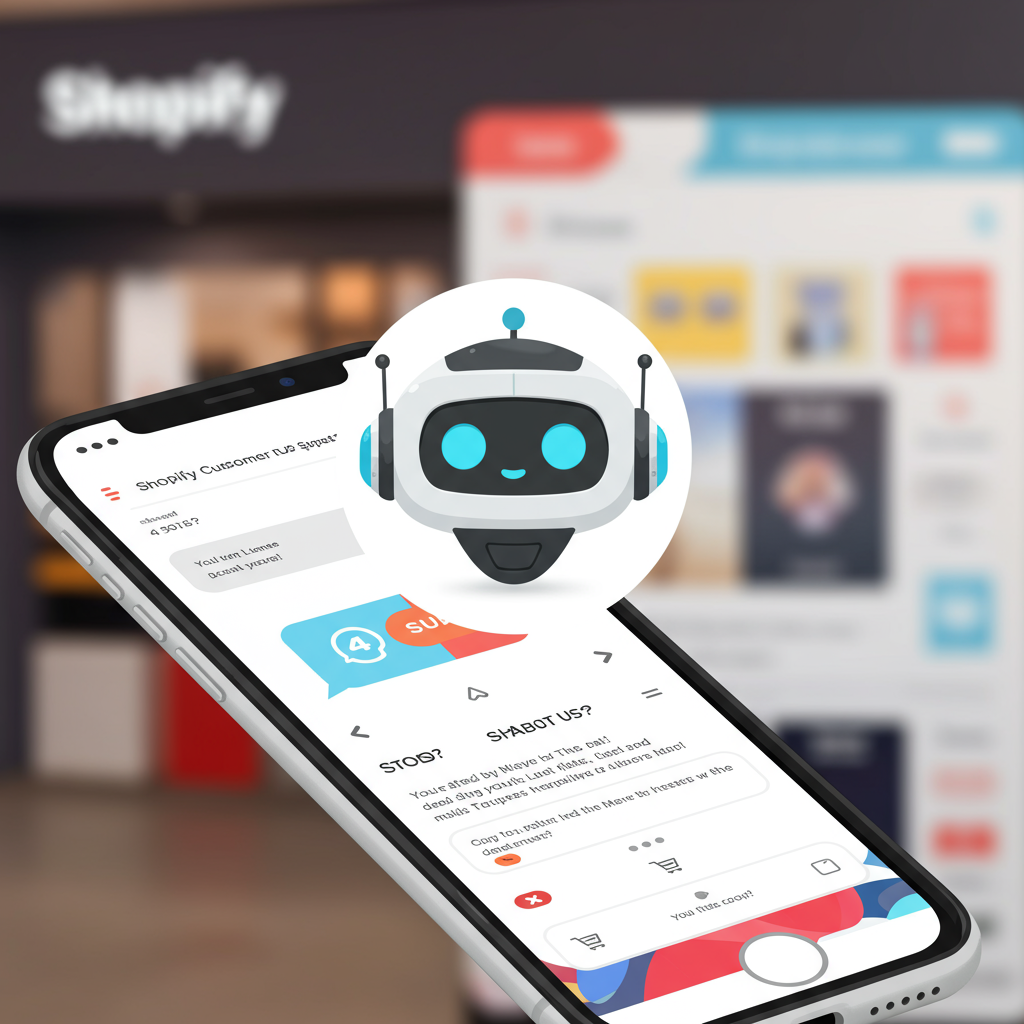Discover how integrating AI-powered chatbots can transform your Shopify store’s customer service, boost efficiency, and enhance customer satisfaction.
As a Shopify merchant, I know the daily grind of running an online store. We pour our hearts into products, marketing, and sales, but one area often becomes a bottleneck: customer service. It’s crucial, yet incredibly time-consuming.
That’s why I’m so excited to share my insights on automating customer service, specifically through the power of chatbots, right within your Shopify ecosystem. This isn’t just about cutting costs; it’s about elevating your customer experience to new heights.
Think about it: how many times do you answer the same questions about shipping, returns, or product details? These repetitive queries eat into valuable time that could be spent on growth strategies.
Furthermore, customers expect instant gratification in today’s 24/7 global marketplace. If they have a question at 2 AM, waiting until business hours can mean a lost sale or a frustrated customer.
This is precisely where chatbots become an indispensable asset for Shopify merchants like us. They are AI-powered (or rule-based) conversational interfaces designed to interact with your customers, providing immediate assistance.
Essentially, a chatbot can live on your Shopify store as a chat widget, ready to answer common questions, guide customers through their purchase journey, or even help them find specific products. They act as your always-on virtual assistant.
One of the most significant advantages is their round-the-clock availability. Your chatbot never sleeps, ensuring that customer queries are addressed instantly, regardless of time zones or holidays.
Customers hate waiting. Chatbots provide immediate answers to frequently asked questions, drastically reducing response times and improving overall customer satisfaction.
Imagine offloading 80% of your common FAQs to a bot. This frees up your human support team to focus on complex issues that truly require a personal touch and critical thinking.
As your Shopify store grows, so does your customer service volume. Chatbots can handle an unlimited number of simultaneous conversations, scaling effortlessly with your business without needing to hire more staff.
By automating routine tasks and reducing the need for a large support team, you can significantly cut down on operational costs associated with customer service. It’s an investment that pays for itself.
Quick, accurate, and consistent responses lead to happier customers. A positive support experience can turn first-time buyers into loyal, repeat customers.
Beyond support, some advanced chatbots can engage visitors, qualify leads by asking relevant questions, and even guide them towards a purchase, acting as a sales assistant.
Modern chatbots can leverage customer data (like past purchases or browsing history) to offer personalized recommendations or support, making the interaction feel more tailored and valuable.
Every interaction a chatbot has can be logged and analyzed. This provides invaluable data on common customer pain points, popular products, and areas where your FAQs might need updating.
Broadly, there are two main types of chatbots. Rule-based chatbots follow predefined scripts and decision trees, excellent for handling frequently asked questions with predictable answers.
AI-powered chatbots, on the other hand, utilize Natural Language Processing (NLP) to understand more complex, varied, and even nuanced customer queries, offering more dynamic interactions.
The good news is that integrating a chatbot with your Shopify store is remarkably straightforward. Many excellent apps are available directly in the Shopify App Store, designed specifically for this purpose.
Consider options like Gorgias, Tidio, or even more specialized platforms like Chatfuel or ManyChat if you’re looking for advanced marketing automation. Shopify Inbox also offers some basic automation features.
Typically, you’ll install the app, connect it to your Shopify store (often with a few clicks), and then begin configuring your chatbot’s flows and responses within the app’s dashboard. No coding is usually required.
Start by identifying your top 10-20 most frequently asked questions. Craft clear, concise, and helpful answers for each. Think about the different ways a customer might phrase the same question.
Design conversational flows that guide the customer. For example, if they ask about returns, the bot should offer options like ‘Check return policy’ or ‘Start a return.’ Always provide an escape route to a human.
It’s crucial to define clear escalation paths. If the chatbot can’t understand a query or if the customer requests it, the conversation should seamlessly transfer to a human agent during business hours.
While you want your bot to be friendly, don’t try to trick customers into thinking it’s a human. Be transparent that they are interacting with an automated assistant.
Your chatbot isn’t a ‘set it and forget it’ tool. Regularly review conversation logs to identify areas where the bot struggled, and then refine its responses and flows to improve performance.
Ensure the transition from bot to human is smooth. The human agent should have access to the full chat history so the customer doesn’t have to repeat themselves, providing a seamless experience.
How do you know your chatbot is working? Track metrics like resolution rate (how many queries the bot resolves), customer satisfaction scores for bot interactions, and the reduction in human-handled tickets.
One challenge can be making the bot feel impersonal. Counter this by injecting your brand’s voice and personality into its responses, and always offering the option to speak to a human.
Another is over-reliance. Remember, chatbots are there to augment, not entirely replace, human interaction. Complex or sensitive issues will always require a human touch.
The future of chatbots in e-commerce is incredibly bright, with advancements in AI making them more sophisticated and capable of handling increasingly complex interactions. They’re becoming integral to the customer journey.
Implementing a chatbot in your Shopify store is a strategic move that can significantly enhance your customer service operations. It’s about efficiency, scalability, and ultimately, creating happier customers.
I truly believe that embracing this technology will give your Shopify store a competitive edge, allowing you to focus on what you do best: growing your business.
What do you think about the potential of chatbots for Shopify stores? I’d love to hear your thoughts and experiences!






